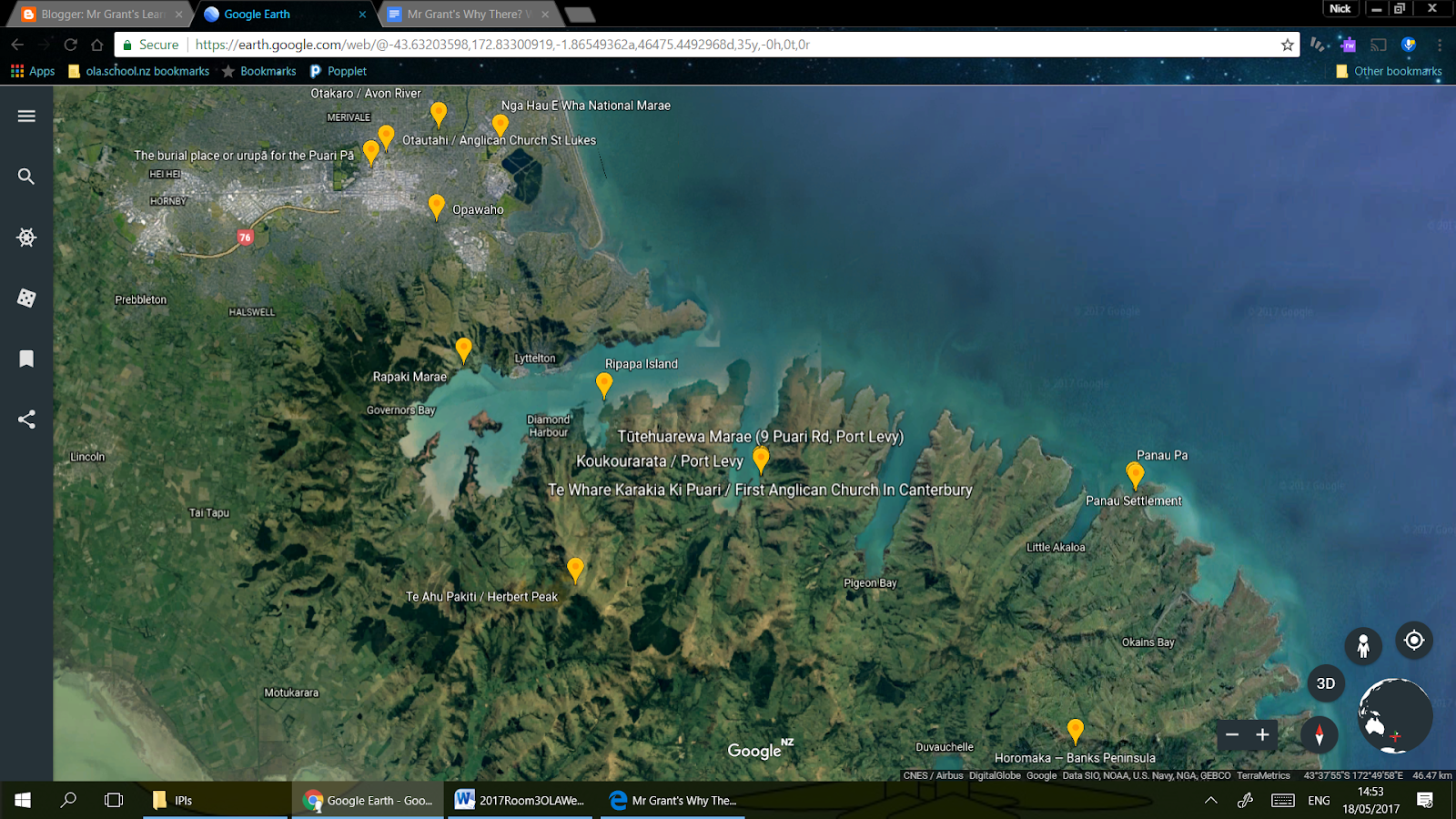Good morning,
The Batten team have been finding out about places around Otautahi / Christchurch and Horomaka / Banks Peninsula that are significant to Maori.

This is some of what I have found out...
This is some of what I have found out...
Koukourarata / Port Levy
The bay was settled by the Ngai Tūāhuriri sub-tribe of Ngāi Tahu, and the chief Moki named the bay "Koukourarata" after a stream in Wellington that recalls the birth of his father, Tu Ahuriri.
It was also the home of Tautahi, the chief after whom the swampland area Ōtautahi was named – now the site of the city of Christchurch.
In the mid-19th century it was the largest Māori settlement in Canterbury with a population of about 400 people.
Port Levy or Koukourarata, the large bay south of Port Cooper is still a centre of Maori life. The first of the Ngai Tahu Tribe to settle at Port Levy was Huikai, and his son Tautahi was responsible for the formation of one of the pas, namely Otautahi, which stood amid the swamps on the area now known as the City of Christchurch. Moki, who conquered Banks Peninsula for the Ngai Tahu Tribe from the Ngati Mamoe, made use of Port Levy as a place to keep his prisoners, prior to their use as slaves or to supplement the food supply. Port Levy, like other places on Banks Peninsula, suffered at the hands of Te Rauparaha after the fall of Onawe in Akaroa Harbour in 1831. It was also attacked previously, during the Kai Huanga Feud of the Ngai Tahu Tribe, when one of its aged chiefs named Te-hanui-orangi was slain. However, Port Levy was one of the first places in Canterbury to receive the message of the Prince of Peace, for Christianity was introduced to the natives from their former enemies of the North Island.
Taawao, a Maori of the Nga Puhi Tribe, and a Wesleyan, brought the faith to Banks Peninsula in 1841. A year later, after his baptism by the Rev. J. Watkin, of Old Waikouaiti, in conjunction with Hohepa Korehi, a Wesleyan from Cloudy Bay, he used Port Levy as a base. In 1843, Tamihana Te Rauparaha and his cousin Whiwhi (Henare Matene) came to Port Levy in the interests of the Anglican Church. Bishop Selwyn followed on February 17th, 1844. By the close of 1844, both the Wesleyans and Anglicans had erected Maori churches. The positions of the two churches are clearly marked on the original map of the Koukaurarata Reserve drawn by surveyor O. Carrington, in 1849, the Anglican Church being at the eastern side of the reserve and the Wesleyan Church at the western side.
Maori Mission Cairn At Port Levy On September 2nd, 1950, the Methodist Church unveiled a Cairn at Port Levy to mark the site of the first Christian service to the Maori of Canterbury by a native named Taawao at the commencement of 1840. Three years later a (Wesleyan) Maori Church was erected on the site. The Methodist Church pioneered Christianity in the South Island.
Panua / Sandy Bay
No comments:
Post a Comment